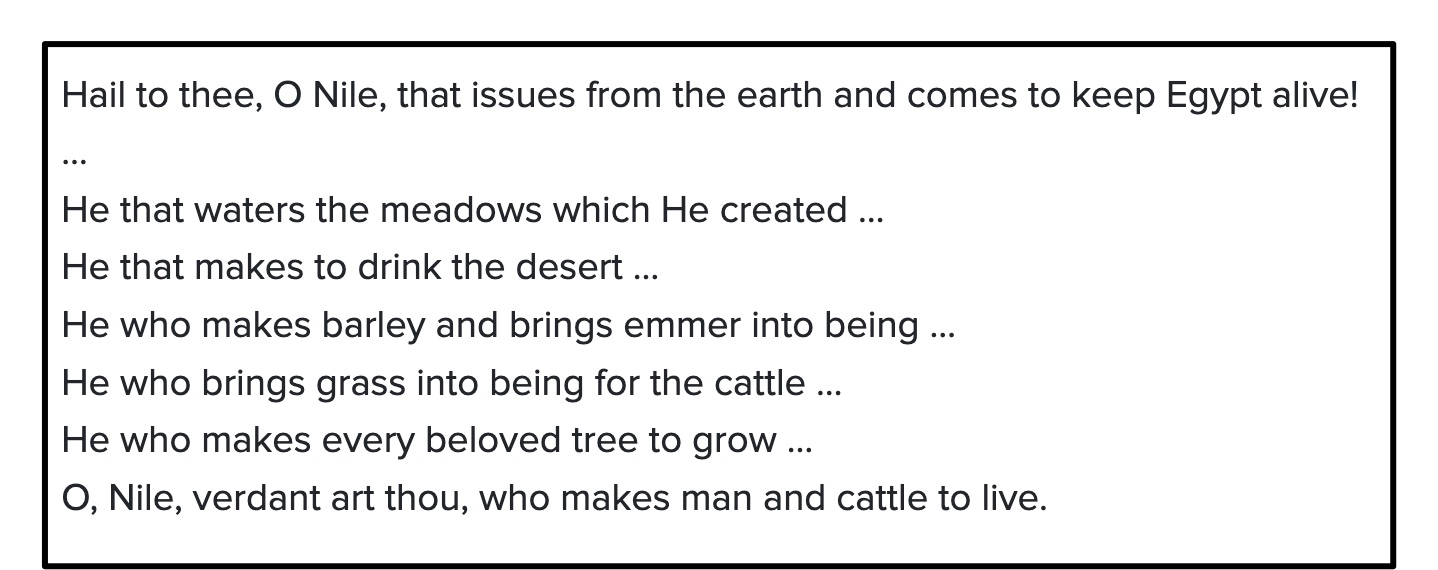Dating back to 1200 BC, Papyrus Sallier II (in the British Museum) memorialized the poetry of the Nile:
This is the original:

It includes the “Hymn to the Nile”:

Like then, bringing irrigation, drinking water, and now, electrification, the Nile represents sustenance to the nations that border its banks.
And that is the problem.
Who Owns the Nile?
Located downriver, Egypt and Sudan claim historic rights to the river. At the same time, the upriver countries also claim possession of the waters that originate within their borders.
But now, with Ethiopia having completed the Grand Renaissance Dam, the answer to, “Who owns the Nile,” is ever more relevant. Because of the dam, Ethiopia, can build the electrification that her country needs. Then though, the water supply on which Egypt depends could be jeopardized.
You can see how location affects the debate. (I added the red arrow to the BBC map.):
Looking back, we can quote multiple Nile Water Agreements. In the 1959 Accord, Egypt was allocated 55.5 billion cubic meters of water each year while Sudan got 18.5 billion cubic meters. Although the Aswan High Dam was completed in 1971, the 1959 Treaty initiated it. Since then, conflicts ebbed and flowed. Essentially, Ethiopia believed that Egypt used the Nile while Ethiopia, the source of 85 percent of the water, got little benefit.
Responding, Ethiopia began to build the Grand Renaissance Dam in 2011.
An immense structure, the mega-dam’s reservoir holds 67 billion cubic meters of water. Generating electricity since February 2022, it is supposed to double the country’s electrical capacity. The goal is to “light up” the 60 million or so people that compose approximately half of their population.
This month, the Ethiopian Prime Minister said on X (previously Twitter), “It is with great pleasure that I announce the successful completion of the fourth and final filling of the Renaissance Dam,” At that moment, we can assume that Ethiopia thought of more electricity while Egypt worried about less water.
Our Bottom Line: Ownership rules
As economists, it all boils down to ownership of the factors of production. Basic to economic activity, we always need to decide who owns the land, labor, and capital. According to two Columbia law professors, several rules explain how we determine ownership. In MINE! How the Hidden Rules of Ownership Control Our Lives, they tell us that being first to claim something has traditionally designated ownership. Also, inputting your labor, attachment, and physical possession solidify your ownership rights.
As Ethiopia and Egypt continue negotiating “Who owns the Nile?” they will surely consider what the MINE professors cite.
My sources and more: Evolving during more than a decade, the Ethiopia dam dispute was updated by the BBC here and here. Meanwhile, this OSU 2013 article, though dated, gave a thorough overview of the facts. Then, always my go-to book for ownership, I referred again to Mine by Heller and Salzman. And finally, the papyrus at the British Museum added the last touch.
Please note that our featured image is a Wikipedia rendition of the dam and several of today’s sentences abour Mine were in a previous econlife post..







